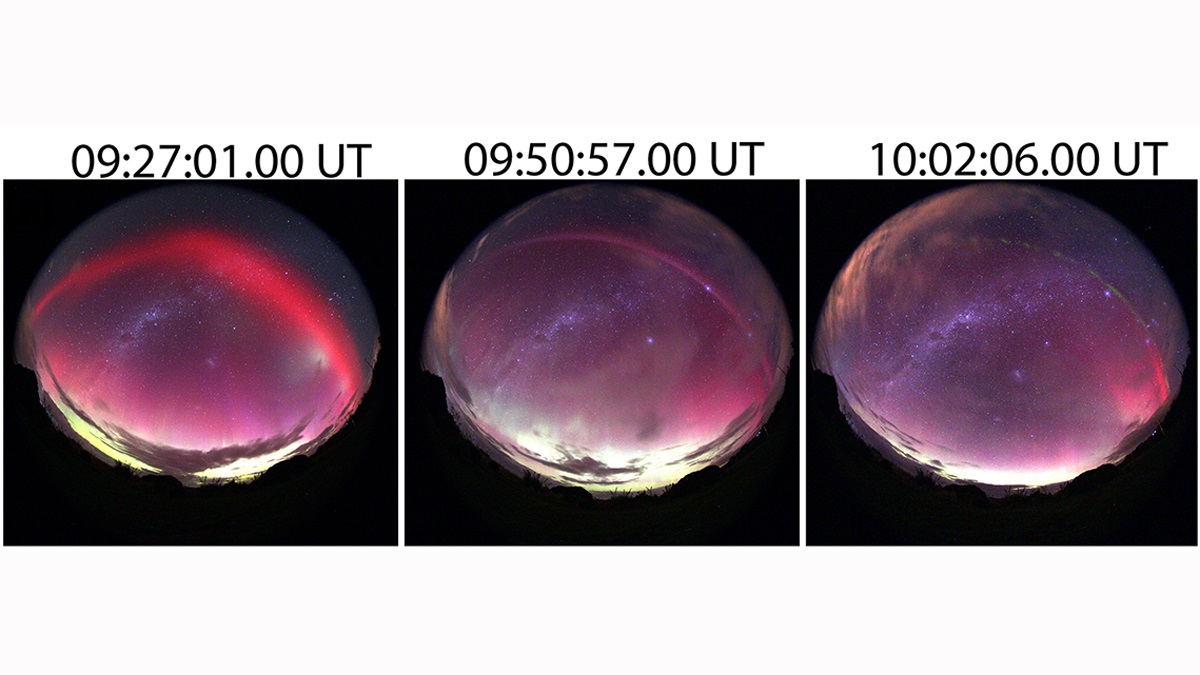Editors’ Highlights are summaries of recent papers by AGU’s journal editors.
Source: Geophysical Research Letters
Martinis et al. [2022] present astonishing auroral observations over New Zealand during an intense geomagnetic storm on 17 March 2015, revealing how a bright red auroral arc evolved into a thin white-mauve arc, known as the strong thermal velocity enhancement (STEVE). STEVE is a new type of auroral phenomena, initially discovered by amateur auroral chasers in 2018. Ever since then, scientists have been deeply puzzled by how STEVE is formed because our current understanding of auroral physics does not seem to apply to STEVE.
These observations offer a clue on the physical processes that lead to the formation of STEVE, which will no doubt instigate new theoretical and modeling investigations on STEVE in the space physics community. It is particularly worth noting that the reported observations were made by a citizen scientist along with professional researchers, demonstrating the importance of citizen science in our future scientific endeavors.
Citation: Martinis, C., Griffin, I., Gallardo-Lacourt, B., Wroten, J., Nishimura, Y., Baumgardner, J., & Knudsen, D. J. [2022]. Rainbow of the night: First direct observation of a SAR arc evolving into STEVE. Geophysical Research Letters, 49, e2022GL098511. https://doi.org/10.1029/2022GL098511
—Gang Lu, Editor, Geophysical Research Letters

